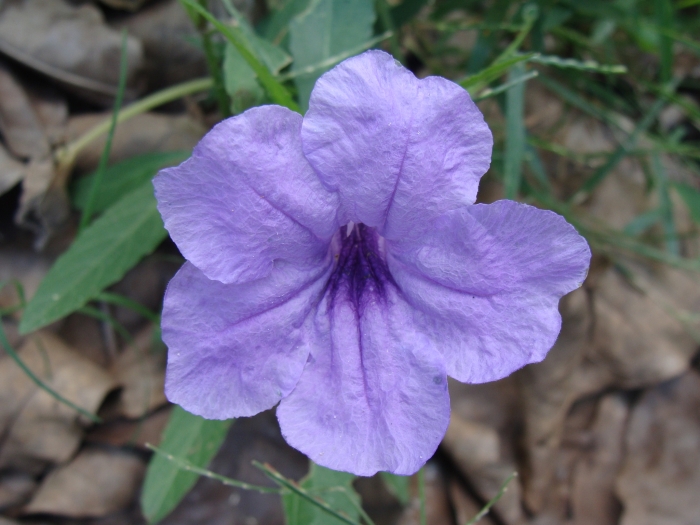Fleur Petard
(Ruellia ciliatiflora)
Fleur Petard (Ruellia ciliatiflora)
/
/

Alexis López Hernández
CC BY 4.0
Image By:
Alexis López Hernández
Recorded By:
Copyright:
CC BY 4.0
Copyright Notice:
Photo by: Alexis López Hernández | License Type: CC BY 4.0 | License URL: http://creativecommons.org/licenses/by/4.0/ | Rights Holder: Alexis López Hernández | Publisher: iNaturalist | Date Created: 2020-12-25T15:07:17-08:00 |

























Estimated Native Range
Summary
Ruellia ciliatiflora, commonly known as Fleur Petard, Hairy Ruellia, Wild Petunia, Hairyflower Wild Petunia, or Triquitraque, is a perennial herb native to a wide range of habitats including tropical rainforests, open woodlands, and forest edges in Southern USA, Central and South America and Mexico. It exhibits a moderate growth rate, reaching a height of 2-3 feet (0.6-0.9 meters) and a width of 1.5-2.5 feet (0.5-0.8 meters). This plant is characterized by its hairy leaves and stems, which give it the common name ’Hairy Ruellia.’ The vibrant purple flowers are trumpet-shaped and bloom profusely in the summer and spring, adding a showy splash of color to the garden.
Ruellia ciliatiflora is valued for its ornamental flowers and its ability to attract pollinators such as butterflies. It is often used in borders, as a ground cover, or in container gardens. This species is relatively easy to maintain and can tolerate a range of soil types, including clay, loam, and sandy soils, as long as they have medium drainage. It prefers full sun to part shade and requires medium amounts of water, making it a versatile choice for various garden settings. While generally disease-resistant, it can be susceptible to root rot if overwatered or planted in poorly draining soils. It is also important to note that Ruellia species can be invasive in some regions, so gardeners should check local guidelines before planting.CC BY-SA 4.0
Ruellia ciliatiflora is valued for its ornamental flowers and its ability to attract pollinators such as butterflies. It is often used in borders, as a ground cover, or in container gardens. This species is relatively easy to maintain and can tolerate a range of soil types, including clay, loam, and sandy soils, as long as they have medium drainage. It prefers full sun to part shade and requires medium amounts of water, making it a versatile choice for various garden settings. While generally disease-resistant, it can be susceptible to root rot if overwatered or planted in poorly draining soils. It is also important to note that Ruellia species can be invasive in some regions, so gardeners should check local guidelines before planting.CC BY-SA 4.0
Plant Description
- Plant Type:
- Height: 2-3 feet
- Width: 1.5-2.5 feet
- Growth Rate: Moderate
- Flower Color: Purple
- Flowering Season: Spring, Summer
- Leaf Retention: Evergreen
Growth Requirements
- Sun: Full Sun, Part Shade
- Water: Medium
- Drainage: Medium
Common Uses
Bird Garden, Border Plant, Butterfly Garden, Groundcover, Hummingbird Garden, Low Maintenance
Natural Habitat
Native to tropical rainforests, open woodlands, and forest edges in Central and South America and Mexico
Other Names
Common Names: Hairy Ruellia , Wild Petunia , Hairyflower Wild Petunia , Triquitraque , Violet Wild Petunia , Fringed Wild Petunia
Scientific Names: Ruellia ciliatiflora , Arrhostoxylum ciliatiflorum , Cryphiacanthus tubiflorus , Cryphiacanthus viscosus , Dipteracanthus nudiflorus , Ruellia congesta , Ruellia glabrata , Ruellia glabrata var. shrevei , Ruellia gooddingiana , Ruellia insularis
GBIF Accepted Name: